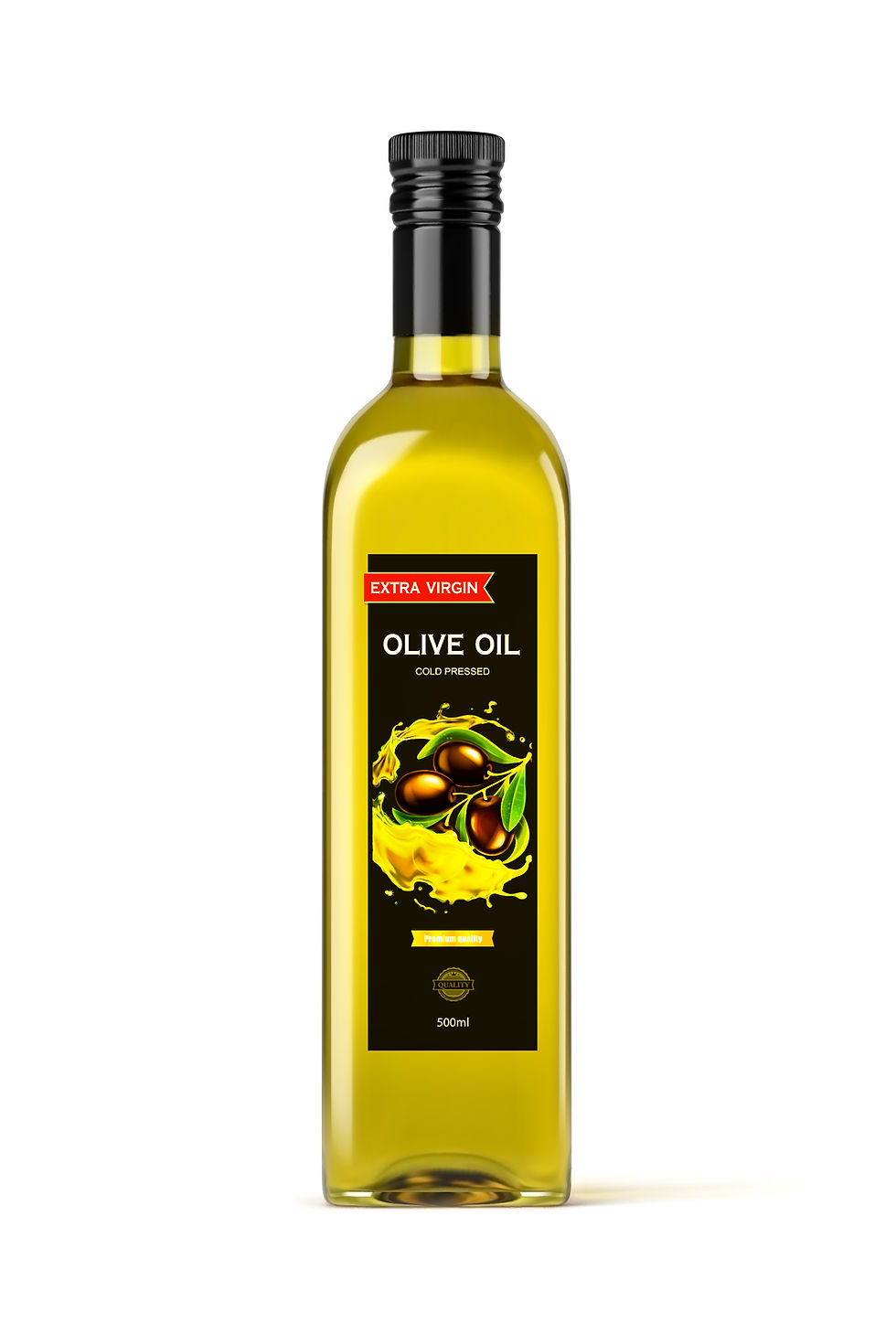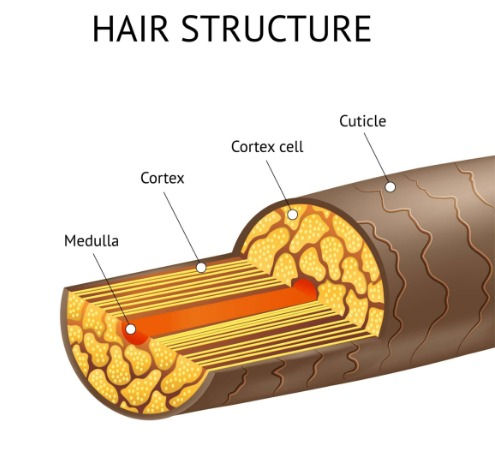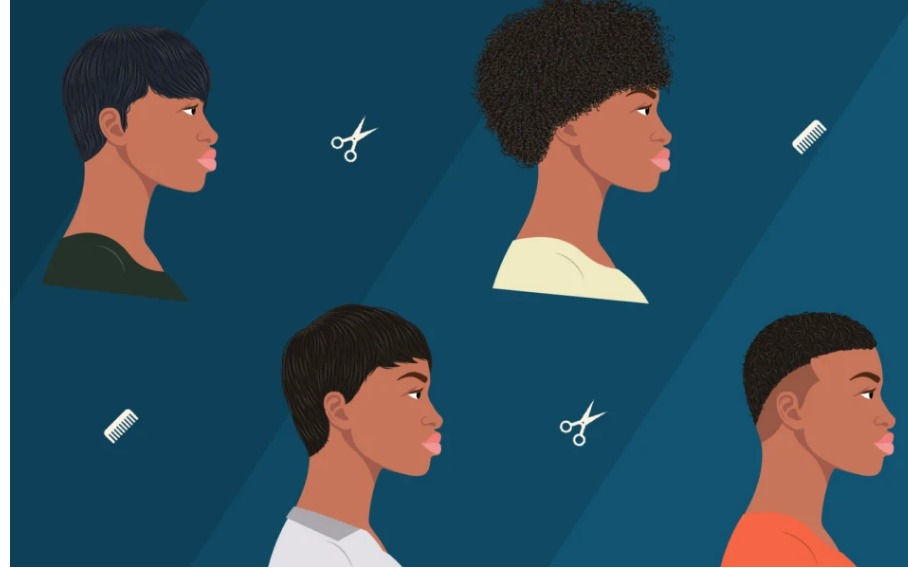All About...HAIR!
- Ronke Bamiduro
- Aug 4, 2023
- 7 min read
Updated: Nov 1, 2023
Hair is so cool. It grows all over our bodies (mostly on our heads) and forms a crucial part of our daily routines as one of the first things you notice about a person. My hair is one of the biggest parts of me and I didn’t realize its significance in my life until a few years ago. In my personal essay for university, I discussed my childhood struggle with a lack of representation of varied hair textures and colors, difficult conversations and interactions that I have had regarding my hair, and just accepting my hair as it is. But hair carries much importance to me. It's my connection to my ancestors, a tribute to their memory. It’s a demonstration of my Black pride and strength. It's something that connects me to my family, other Black women and other in general as we discuss and celebrate our different experiences.
So, let’s talk about...

THE SCIENCE
Hair. It’s made of the fibrous, structural protein keratin which is held together by disulphide and hydrogen bonds in rows, according to experts, between 0.5 and 1.7 centimetres a month. The basic structure of a hair strand is:
The medulla. It is the innermost layer of hair, only visible in thick hair types and consists of air spaces and cells.
The cortex. This is the middle layer of hair where the keratin proteins and other lipids are concentrated. Your cortex determines the shape, length, colour and elasticity of your hair.
The cuticle. This is the outermost part of the hair which is comprised of overlapping dead cells which acts as a protective layer.
Hair is the second fastest growing tissue in body after the bone marrow so the average person’s haor will grow around 6 inches per year. Hair gets its colour from the pigment melanin so the lighter the hair colour, the smaller the melanin concentration.
THE DIFFERENCE
It was rather difficult to classify hair types especially due to differences in curl patterns, length, thickness and overall appearance. But before the hair was the main focus, it was a form of racial segregation. Hair typing in the 20th century was central to exacerbating discrimination against people of colour. As part of this racist agenda, the informal hair typing system the Apartheid Pencil Test where a person couldn’t be White if they put a pencil in their hair, shook their head and the pencil still remained within their hair. This is the controversy surrounding hair classification systems—their origins are rooted in contrasting people’s proximity to Whiteness and invalidating their humanity.
Presently, the hair classification system we use was developed by Oprah Winfrey’s hair stylist as a means to market his hair products—the Andre Walker Hair Typing System. Indeed, it has critiques as it establishes a hierarchy of hair textures but overall, it allows a good understanding of hair texture and curl patterns. The four hair types and their subcategories are:
Type One
Straight hair that lies flat on the scalp
1A: this type of hair that is fine and thin as well as straight.
1B: this is hair that has more volume than 1A and is of moderate thickness.
1C: hair that is straight, coarse and the thickest of type 1 hair.
Type Two
Wavy hair with a distinct S shape
2A: this is hair that is straight at the roots and has loose waves towards the tips of the hair.
2B: this hair type has a more natural wave pattern, and the wave pattern becomes more visible from the middle of the hair.
2C: this type of hair is wavy from the root and has a defined S shape from the start of the hair.
Type Three
Hair with spiral curls
3A: the loosest and thinnest of the curly hair types.
3B: thicker than 3A and with wider and tighter curls.
3C: this is the thickest of type 3 hair with tight and springy curls.
Type Four
coily/kinky typed hair, usually attributed to Black people
4A: a hair type that has tight coils full of movement with more of a loose coil than the other type 4 textures
4B: densely packed curls, more so than 4A and the coils bend into a Z-shaped pattern
4C: this hair type is characterised by very tight Z-shaped coils which are very difficult to distinguish a
There are also two terms used to describe hair which are important to understand
Porosity refers to the ability of hair to retain and absorb moisture.
Elasticity refers to how long a strand can stretch before it recoils to its original state.
These will vary based on the hair texture
THE STRUGGLE
Being a black woman with naturally kinky 4C hair, it was very hard not only to manage my hair but also to deal with discussion around my struggle and the similar struggle experienced by other Black women due to the lack of diverse representation in mainstream media when I was growing up. I always played with dolls with type 1 to 3 hair which was easier (at first) to braid than my own. It didn’t help that the Black women that I usually saw had hair that conformed to Eurocentric beauty standards (either because they had undergone chemical treatments or because they were lighter in skin tone than myself, but the colorism discussion is one for another day). These women often didn’t wear their hair naturally.
In African societies, hair was a symbol of social and marital status, tribe and spirituality. Today it is a symbol of all of these and independence, strength and confidence.
There is much ignorance in wider society regarding Black hair and whilst I won’t be able to unpack the entire history here, this is indeed a medium to start the conversation. Many traditional hairstyles (now often worn with hair extensions) were a form of connection to the homeland during the era of slavery. Though masters forced the enslaved people to shave their heads to keep a “tidy” appearance, women especially would braid their hair. The well-known cornrow style was a way for women to store grains of rice, maps and other resources that could aid their journey to freedom. So, when celebrities wear these styles for fashion or because they’re “trendy”, it’s painful as the history is clearly not understood. I recently cut my hair and whilst at first, I deemed it a new mental and spiritual beginning, in writing this article, I realized that it is more than that. My ancestors had short hair imposed on them to be deemed acknowledgeable in the eyes of colonisers. But now, I cut my hair out of free will to take back power, exercise free will over what happens to my hair and feel some form of connection to my ancestors. Hair for me has such a deep spiritual meaning and I think hair is a beautiful attribute for us all.
There is still much stigma that remains around Black hair—some schools and workplace still deem braided hairstyles and natural type 4 hair unprofessional (ironic when examples of so-called professional hair are given) leading to women chemically straighten their hair; a process from which many health complications like cancer, reproductive problems, heart disorders and others. The best thing to do in my opinion is learn as much history as you can, spark these discussion with Black women around you and them feel heard, be mindful of the language you use to describe their hair and please, unless given permission, don’t touch our hair :) (there's a book called Don't Touch My Hair by Emma Dabiri which discusses all of this and more: definitely worth a read!)
THE CARE
As previously discussed, we all have different hair textures, and I can’t tell everyone of every hair texture how to style or care for their hair (I’ll add some articles I read before writing this in the reference section), but I can give general hair care tips.

Know your hair type. Hair care for each texture will look different so it's best to distinguish what you hair is and do research around what would work best for you.
Use a shampoo and conditioner to wash your hair. This ensure that any dirt is removed from your hair and if your hair isn’t washed, over a long period of time, a yeast-type fungus (Malassezia) can begin growing on the hair. That being said, however, it is important not to over wash your hair as this could strip it of naturally occurring oils which are healthy for hair growth. Remember shampoo the scalp mainly and condition the ends.
Avoid heat. Over long periods, it can make the hair quite brittle and weak. If there are heat protection options available, seek those out when straightening/curling hair and let hair air/ towel dry if you can.

Trim your ends. It's different for each hair texture but regardless it’s important as split ends aren’t fun. Trimming your hair allows the removal of the broken and damaged parts of the hair enabling it to grow.
Moisturize. Again, there will be products that are tailored exclusively to different hair textures so do your research but moisturising your hair is important as we lose hair and associated proteins regularly, so we need to restore them back onto our scalps and moisture is a great way to do that.

Hair is such an interesting topic to talk about with so many dimensions to consider and I myself am still learning more about hair everyday but I hope you took something away from this and love your hair whatever it looks like!
References:
Cobb, C. (2019) What to know about hair growth [Preprint]. Available at: https://skinkraft.com/blogs/articles/hair-care-tips#hair-care-dos (Accessed: 27 July 2023).
Simeon, A. (2021) The controversial history of the hair typing system, Byrdie. Available at: https://www.byrdie.com/hair-typing-system-history-5205750 (Accessed: 24 July 2023).
Cox, C. (2023) How to determine your hair type, The Trend Spotter. Available at: https://www.thetrendspotter.net/hair-types/ (Accessed: 1 August 2023).
Oriental Solutions (2019) The importance of hair care, Oriental Hair Solutions Blog. Available at: https://orientalhairsolutions.com/blog/2019/03/30/the-importance-of-hair-care/ (Accessed: 01 August 2023).
A short history of hair discrimination (2020) Halo. Available at: https://halocollective.co.uk/halo-background/#:~:text=Slavery%20%26%20Colonialism&text=Slave%20traders%20regularly%20shaved%20the,locs%20during%20the%20Middle%20Passage. (Accessed: 04 August 2023).
For more articles like this follow us on:
Tik Tok: @thepurelifemagazine
Instagram: @thepurelifemag
Pinterest: @thepurelifemag
Subscribe to our newsletter to receive tips, tricks, and how-tos on everything fashion, beauty, lifestyle and more!






Comments